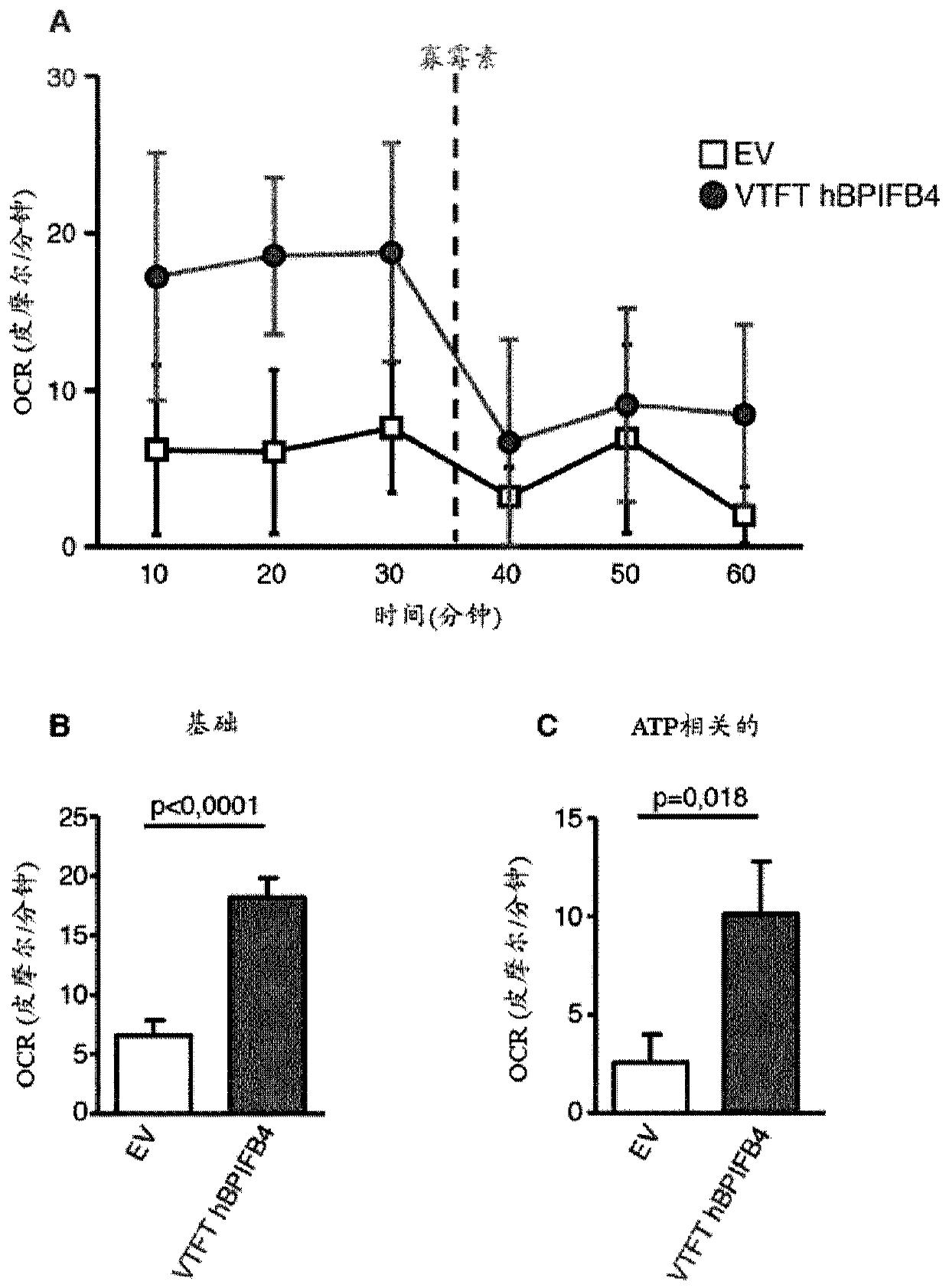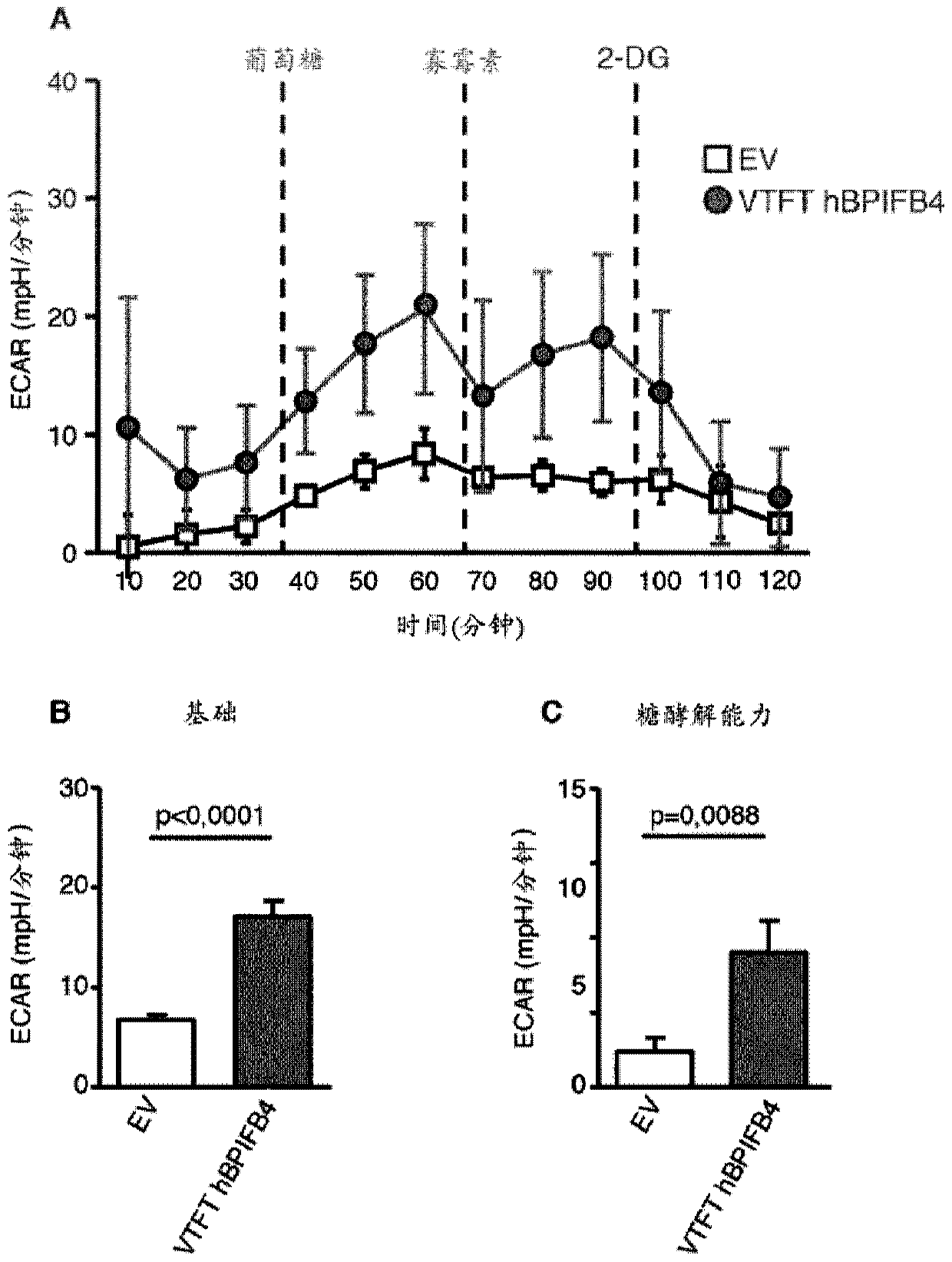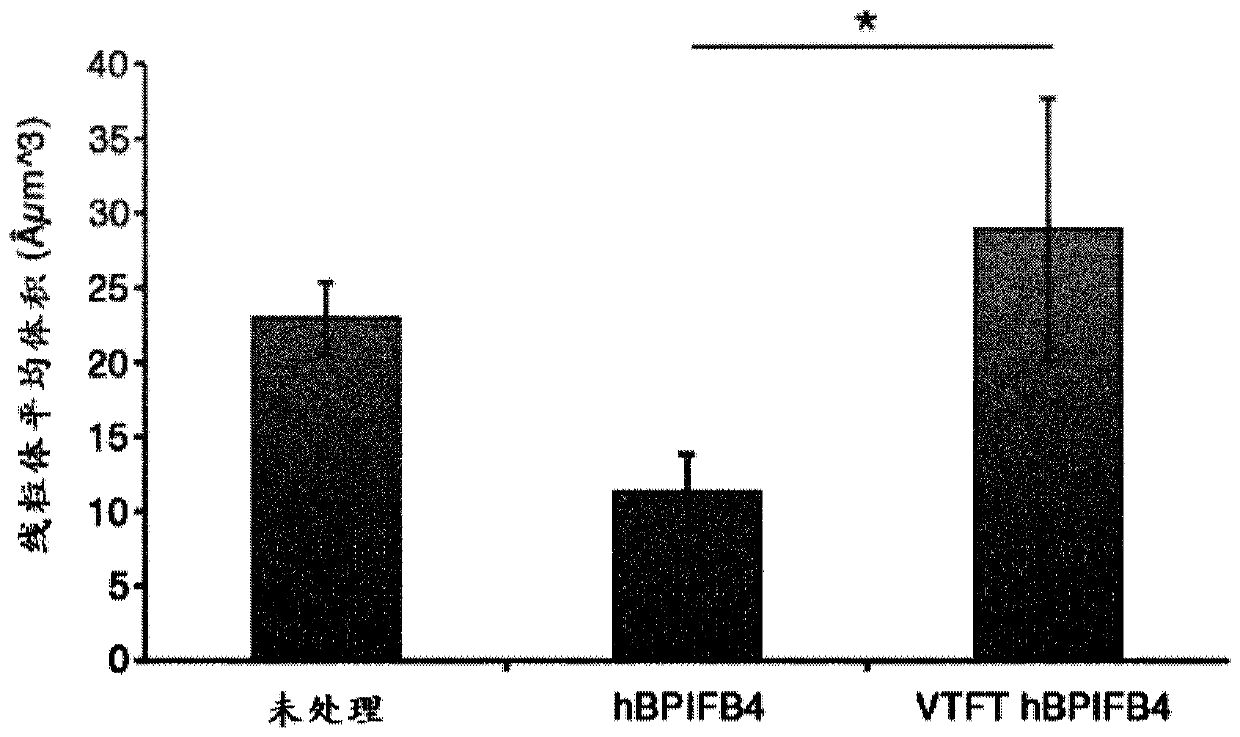Vtft isoform of a bpifb4 protein for use in neuronal diseases and injuries
A neuron and isotype technology, applied in neurological diseases, mammalian proteins, peptide/protein components, etc., can solve the problems of metabolic antioxidant disappointment, inability to enhance mitochondrial antioxidant levels, etc.
- Summary
- Abstract
- Description
- Claims
- Application Information
AI Technical Summary
Problems solved by technology
Method used
Image
Examples
Embodiment approach
[0166] According to other embodiments of the present invention, there is provided:
[0167] A protein for the treatment or prevention of a disorder selected from neuronal diseases and injuries, said protein being a VTFT isoform of BPIFB4 protein or a functional fragment thereof, said disease and injury being associated with mitochondrial dysfunction and / or protein aggregation related. A polynucleotide encoding such a protein and a vector comprising such a polynucleotide are also provided.
[0168]A protein which is a VTFT isoform of BPIFB4 protein or a functional fragment thereof for the treatment or prevention of a disease selected from the group consisting of: Alzheimer's disease; Parkinson's disease; Huntington's amyotrophic lateral sclerosis; spinocerebellar ataxias (SCA), especially SCA1, SCA2, SCA3, SCA6, SCA7, SCA17; Friedrich's ataxia; Down syndrome; Wolfler Mus syndrome; mitochondrial myopathy, encephalopathy, lactic acidosis with stroke-like episodes; Chakmaledus d...
Embodiment 1-V
[0176] Effect of embodiment 1-VTFT-hBPIFB4 carrier on cell metabolism
[0177] To establish how VTFT-hBPIFB4 affects cellular metabolism, the bioenergetics profile of HEK293T cells transfected with pRK5 empty vector (EV) or pRK5VTFT-hBPIFB4 (VTFT-hBPIFB4) was measured.
[0178] Metabolic profiles were assessed in HEK293T cells 72 h after transfection with EVs or VTFT-hBPIFB4 encoding pRK5 plasmids.
[0179] Indices of mitochondrial respiratory function were calculated from the OCR profiles: basal OCR (before oligomycin addition) and ATP-related OCR (calculated as the difference between basal OCR rate and oligomycin-induced OCR rate).
[0180] Indices of glycolytic pathway activation were calculated from ECAR profiles: basal ECAR (after glucose addition) and glycolytic capacity (calculated as the difference between oligomycin-induced ECAR and 2-DG-induced ECAR).
[0181] Data are expressed as mean ± s.e.m. from 2 separate experiments. n=5 replicates per sample. A two-taile...
Embodiment 2
[0193] Example 2 - Huntington's disease model
[0194] The therapeutic potential of AAV-VTFT-hBPIFB4 was investigated in a transgenic mouse model of Huntington's disease (HD). HD is caused by the amplification of a polyglutamine channel encoded by polyCAG in the N-terminal region of huntingtin (Htt). The R6 / 2 mouse model is a transgenic mouse with a poly-CAG expansion between 115 and 150 repeats in exon 1 of the Htt gene. This is the most commonly used and best characterized model of human pathology and is characterized by progressive loss of cognitive and motor function, both at the molecular level (with similar toxic Similar to human diseases (transfer defects) all show different degrees of similarity with human diseases.
[0195] Analysis of Movement Behavior
[0196] Fine motor skills and coordination were measured using a well-validated motor test as previously described. All tests were performed during the light-dark light phase. Six to nine mice per experimental ...
PUM
 Login to View More
Login to View More Abstract
Description
Claims
Application Information
 Login to View More
Login to View More - R&D
- Intellectual Property
- Life Sciences
- Materials
- Tech Scout
- Unparalleled Data Quality
- Higher Quality Content
- 60% Fewer Hallucinations
Browse by: Latest US Patents, China's latest patents, Technical Efficacy Thesaurus, Application Domain, Technology Topic, Popular Technical Reports.
© 2025 PatSnap. All rights reserved.Legal|Privacy policy|Modern Slavery Act Transparency Statement|Sitemap|About US| Contact US: help@patsnap.com



